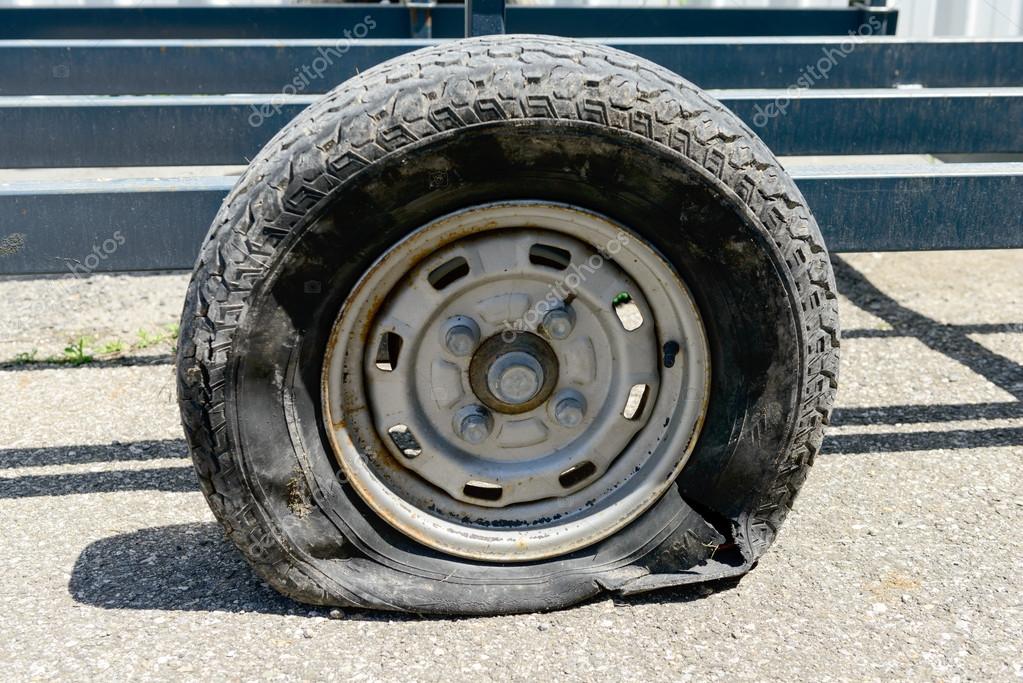Taking care of tires must be a priority for every car, truck, RV, or trailer owner. After all, the tires are all that stands between your vehicle and the roadway.
Proper tire maintenance is not limited to checking air pressure and inspecting them for signs of damage. Tires that are left sitting still for an extended period (think of a personal water craft that sits dormant for well over half the year in colder climates) can be at risk of dry rotting, which is a problem best avoided.
Dry rotting generally manifests itself in the form of cracks in the rubber. As tires age and face greater exposure to the sun they can lose their protective resin covering, which leaves the rubber underneath vulnerable to other natural elements and makes the tire become brittle. When this happens the tire becomes more vulnerable to other forms of damage, which means it can quickly become unusable.
Dry rotting in tires is most commonly attributed to inactivity. If a trailer is sitting in your driveway or parking lot for an extended time, this means its tires will be left exposed to the elements and also sitting in the same position. Elements such as rain, moisture, sunlight and ice can all eat away at the tire rubber over time. For example, extended exposure to sunlight means the tires are exposed to ultraviolet rays, which can be a nightmare for the aforementioned resin coatings that tires rely on for protection.
Additionally, long-term contact with the ground can cause tire dry rot and flat spots. Finally, pressure and weight can also put significant strain on your tires and cause them to degrade faster. If you have a heavy load on your trailer and leave it resting on the wheels for an extended period, trouble might follow in the form of damaged tires.
Fortunately there are a number of steps you can take to protect your tires from the elements described above and extend their usable lifespan.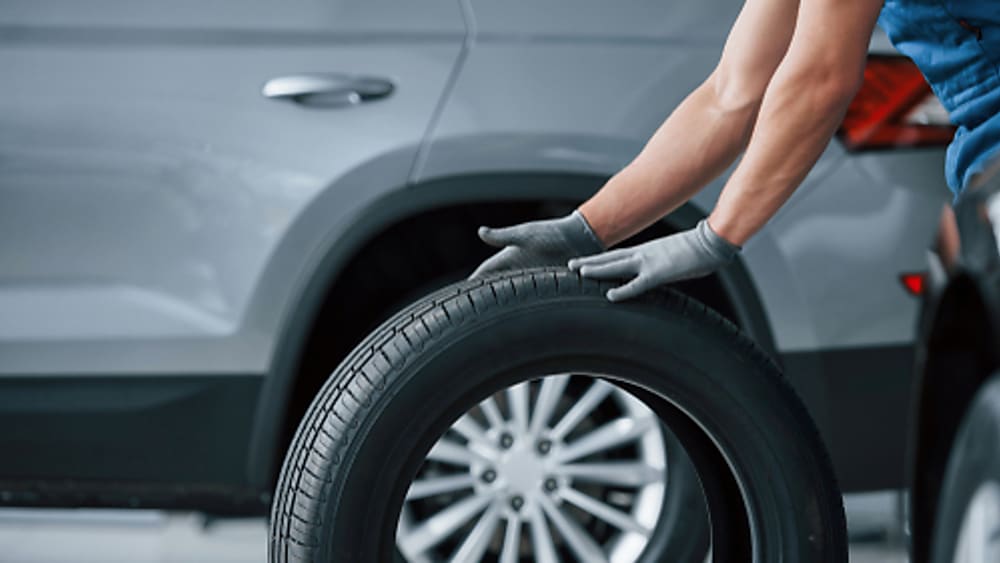
First, it is critical to protect your tires from sun exposure. At most car and RV stores you can buy covers that are specially made for this purpose. Using them helps you prevent ultraviolet light from degrading your trailer tires in your driveway.
Consider rotating the tires on a regular basis. By this, we don’t mean in the traditional sense of swapping their places as one might do at an oil change. Instead, just try and move the trailer around every few weeks so that it’s resting on a different part of the tire. This will help spread out the impact of the weight, which can ensure that the tire is equally worn and no disproportionate wear contributes to its premature demise. You can also help better distribute the weight of the trailer by having the tires rest on plywood that you’ve laid out on the driveway ahead of time. This works similarly to a snowshoe, distributing your weight so your foot doesn’t sink all the way into the snow.
Test your tire pressure regularly. Over- or under-inflated tires can be a real threat to the integrity of your trailer’s tires. One of the best possible options is that if your trailer is going to be inactive for an extended period you could also leave it resting on blocks, remove the tires altogether, and store them while underinflated in a cool, dry place.
Over- or under-inflated tires can be a real threat to the integrity of your trailer’s tires. One of the best possible options is that if your trailer is going to be inactive for an extended period you could also leave it resting on blocks, remove the tires altogether, and store them while underinflated in a cool, dry place.
Protecting and maintaining your tires is the responsibility of every vehicle owner, and it becomes especially pressing when it comes to trailers, which might face long stretches of little to no use. By educating yourself on what dry rot can do to tires, what the contributing factors are, and how you can prevent them, you can go a long way towards extending the lifespan of your trailer and keeping your family and equipment safe.
Even as the name is self-explanatory, there are a few things that you should know before taking a leap into the prevention steps.
 In more severe forms of dry rotting, you will see small cut pieces of tires popping out from the sidewall
In more severe forms of dry rotting, you will see small cut pieces of tires popping out from the sidewallThere is no exclusive kit or set of equipment required to prevent dry rotting. But yes, there is some sort of equipment required depending on the prevention method you opt for. Having said that, here are a few things that you will always require.
 This is because petroleum-based tire cleaners augment the oxidation process leading to a faster wearing out of the rubber.
This is because petroleum-based tire cleaners augment the oxidation process leading to a faster wearing out of the rubber. Preventing the trailer tires from dry rotting isn’t a one-time thing or a process. To protect your tires, you need to adopt some measures and use the right materials to support the methods. So, here are the things you need to do.
#1. Regular InspectionsThis is the first step towards preventing dry rot and saving you the money to replace the tires. Firstly, ensure that you conduct regular inspections of the trailer tires and the trailer itself. Fix a day in the month or once every two months for the inspection.
Start with the sidewalls to notice any sort of cracks, discoloration (gray), or any sort of bulges in the tire. For the treads, check for cracks. Well, if the tires have been on the road before, the treads will have some cracks. So, where treads can confuse you, focus on the sidewalls.
For the treads, check for cracks. Well, if the tires have been on the road before, the treads will have some cracks. So, where treads can confuse you, focus on the sidewalls.
Protection from the sun is also essential to protect the tires from dry rotting. If you do not have enough space in your home to park under the shade, hire a unit for the same.
If that’s also not possible, find a tree where you can park or look for the trailer parks in your area to keep the trailer there.
In case any of these is not possible, and you are forced to park the trailer under the sun, use a tarp to cover the trailer from all the sides, including the tires.
#3. Cleaning the TiresA simple thing such as washing and cleaning the tires can improve their life and prevent dry rotting. Complement the tire cleaning process with tire covers to keep them in an immaculate condition for years to come.
However, while cleaning, use a water and soap solution.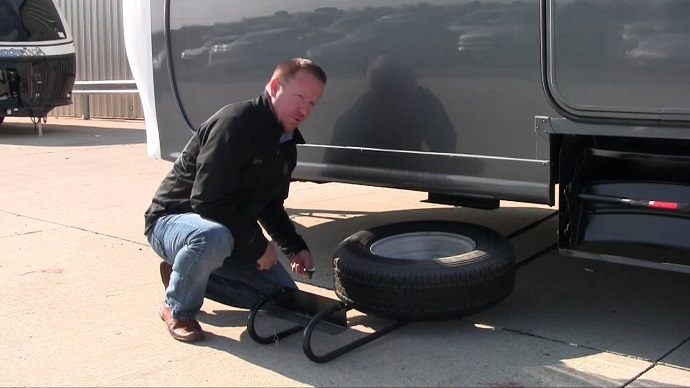 Do not use heavy chemical-laden products to wash them as it can do more harm than good. After washing the tires, shield them with tire and wheel covers for extra protection.
Do not use heavy chemical-laden products to wash them as it can do more harm than good. After washing the tires, shield them with tire and wheel covers for extra protection.
An under-inflated trailer tire is akin to an accident waiting to happen. Even if the trailer is parked, you must ensure that it always has the company-recommended air pressure. Under-inflation aggravates the dry rotting process, and if you drive with less pressure, the intensity of tire treading will be higher.
A word of caution: if the tires have already started to dry rot and you see cracks in the sidewalls as well as the treads, the inflating needs to be more frequent. This is to prevent further rotting and ensure that when you take the trailer out for inspection before a trip, it can reach the repair shop.
#5. Do Not OverloadIf we were writing a guide on how to store your trailer for the summer or winter, the first thing we would have shared is emptying the trailer. Every tire is built to withstand a certain capacity of weight. However, when the trailer is parked, the tires are already under a lot of stress.
Every tire is built to withstand a certain capacity of weight. However, when the trailer is parked, the tires are already under a lot of stress.
An overloaded trailer will only add to the problems, including accelerating the dry rotting. Plus, the extra weight can cause cracks, bulges, and even a blowout, especially when the tires are directly exposed to the sun’s UV rays.
Frequently Asked QuestionsHow long can I drive the trailer with dry rotted tires?
The question is not about how far, but how much you are at risk of a blowout when driving with dilapidated tires. So, it is best that if you see the signs of dry rotting, check for its impact and then replace them before taking the trailer out on a long trip.
What’s the best way to tell that trailer tires are dry rotting?
Sidewall cracks is the quickest and most authentic way to find out if the trailer tires have started to rot. This can happen due to the heat, pressure, leaking oils, and chemicals from cleaning agents.
Can I also remove the tires to save them from rotting?
Yes. If you can invest in two pairs of jacks, it is better to take the tire out and store them in a cool and dark place with no exposure to the sun. While storing them inside, you can also use an Aerospace Protectant for better protection.
People often tend to evaluate the quality of tires and their condition solely by the rest of the tread layer.
Of course, this is an important indicator, but there is a problem that, hitting the tread, does not immediately show visible marks on the surface. Cracking or "dry rot".
Most often, the causes of its appearance are the long storage of the vehicle without movement, low tire pressure, overheating and exposure to certain chemicals. When tires are carefully inspected, dry rot can be seen by the presence of small, web-like cracks.
Cracking occurs when the oils and moisture in the tire's rubber material begin to evaporate, making the rubber hard and brittle, causing the tire to break down quickly.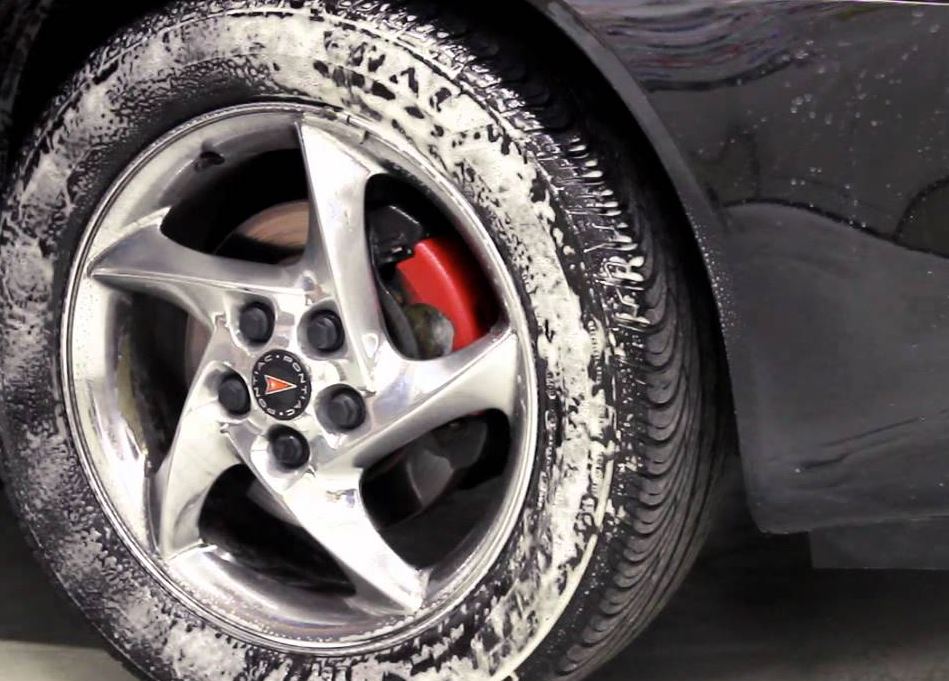
Simply put, tires found to be carrying dry rot should NOT be used as unsafe tires.
Although there are no tire brands that are more or less susceptible to dry rot, one should always be aware of the storage and operating conditions that contribute to its occurrence: long periods of inactivity at high temperatures, exposure to chemicals (pesticides, herbicides, etc.). These problems are most typical for agricultural machinery and its wheels.
This does not mean that agricultural tires are inherently more likely to crack. It's just that conditions that are considered favorable for the formation of dry rot usually occur exactly where tractors and combines work.
Actions to prevent the occurrence of cracking involve simply eliminating the consequences of adverse factors with the help of elementary actions.
Proper storage
If you are storing your car for winter or just long-term storage, keep an eye on the factors that are within your control whenever possible. Do not leave the equipment under scorching direct rays for a long time, and always put it in a garage or shed whenever possible.
Do not leave the equipment under scorching direct rays for a long time, and always put it in a garage or shed whenever possible.
In winter and summer, of course, it is ideal to store cars in a room where the temperature is regulated.
Regular cleaning
Chemicals are a common occurrence in agricultural businesses and some industries. Chemicals that come into direct contact with the surface of the wheels must be washed off after each work cycle. Simply rinsing with soapy water is enough to prevent harmful compounds from penetrating further into the depths.
Pressure control
Low pressure is one of the serious threats to the good condition of tires, leading to dry rot. Under-inflated tires can develop cracks in the sidewall through which air leaks, contributing to the enlargement of the cracks and the drying of the rubber.
If the tires on your loaders do not have time to last until the tread is completely worn out, not due to exposure to chemicals or aggressive sun, but due to frequent punctures due to production features, pay attention to Tyrefill technology - filling tires with polyurethane.
The PST company has been providing this service to its customers for several years and has collected quite a lot of positive feedback and properties of the proposed composition. The tires are softer and more “springy” than ordinary solid tires, while they are not afraid of sharp objects.
Call and find out more: +7 (495) 150-04-39
after all, no punctures or damage are visible ... What is the problem? Someone may think that supernatural forces intervened, but most likely there is a more logical explanation for the loss of pressure. Find out why seemingly intact tires can lose air pressure and what you can do to keep unexpectedly flat tires from spoiling your mood!
Even if the tires are not used, the rubber in the tires ages over time. Just as expired products can look fresh in packaging, old tires can look like new but lack their durability and performance. This is why many tire manufacturers recommend taking tires out of service after 6-10 years from the date of manufacture, even if they have never been used!
This is why many tire manufacturers recommend taking tires out of service after 6-10 years from the date of manufacture, even if they have never been used!
Over time, the rubber in tires loses its properties, small, barely noticeable cracks may appear in it. They can be difficult to detect and even more difficult to repair. Air leaks slowly through microcracks in the rubber. If you suspect that one of your tires has cracked due to aging, you should contact a specialist to check its condition.
Tire age is not the only thing that can cause micro cracks in tires. Dry rot can also damage the integrity of the rubber compound that tires are made from! But what is dry rot? Dry rot is a term that describes the fragility of a tire, which is caused by degradation of the rubber compound from which the tire is made.
Unlike wood dry rot, tire rot is not caused by fungi or bacteria. Dry rot of a tire occurs as a result of exposure to external conditions that adversely affect the composition of the rubber compound of the tire.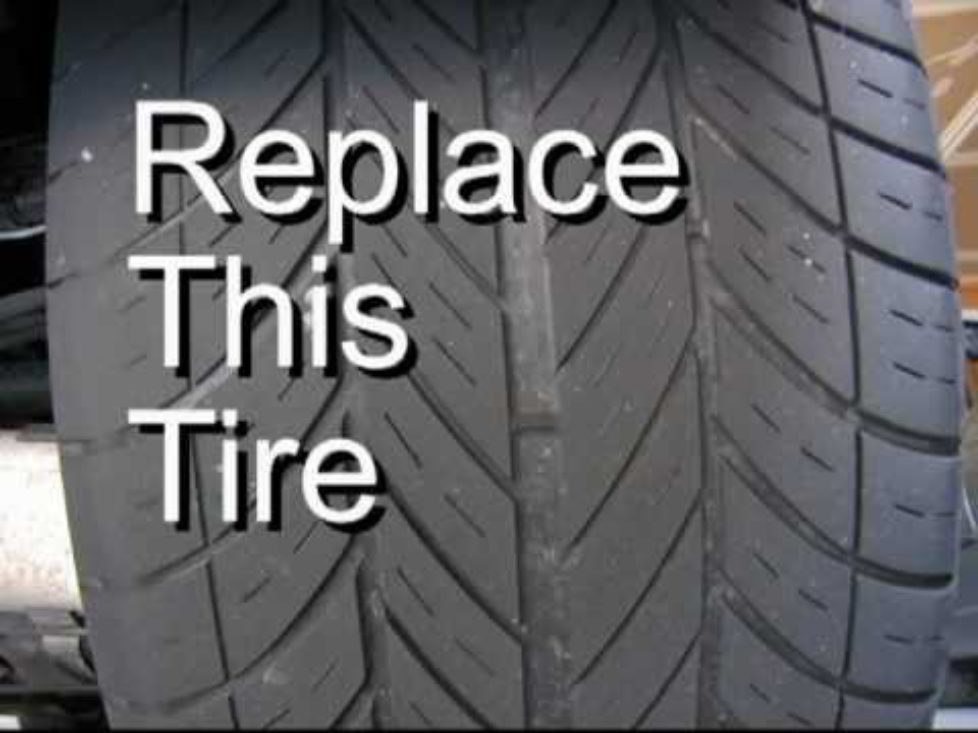 As a result, the tire dries out, which is the cause of cracks and flaking.
As a result, the tire dries out, which is the cause of cracks and flaking.
Proper tire care and regular inspection will help prevent dry rot. If you plan to leave the car parked for a long period of time, check the tire pressure at least once a month and inflate them if necessary. Make sure tires are out of direct sunlight.
When storing tires for a long period of time, use special covers. We previously talked about how to properly store tires here.
If you notice signs of dry rot on a tire, usually small spider web-like cracks located on the sidewall of the tire, contact your tire shop for advice on what to do next.
You changed a tire and after only a few kilometers it began to deflate, with no punctures in the tire tread and no damage to the sidewalls - at this point anyone would think that this is some kind of curse! But not the one who knows that the problem may also lie in a faulty valve.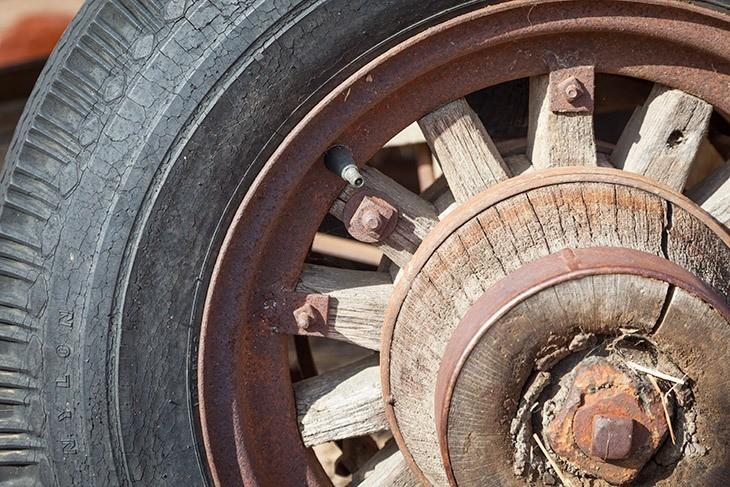
The valve is a wheel element that allows you to adjust the air pressure in the tire. The valve consists of several parts, including the body, spool and cap. The spool allows air in and out, and the cap keeps debris out of the valve.
Wheel valve rubber housings can crack due to age, moisture, temperatures, road salt and even UV rays! The spool can also wear out and become unusable. A valve that is damaged in any way may leak air.
Wheel valve problems can be avoided by replacing them every time the tires are changed in season!
The tire bead is a structural part of the tire, which is a hard rubber edge, thanks to which the tire is securely fastened to the rim. The tire beads are made of special rubber compounds reinforced with metal. This structural element of the tire must ensure a tight and hermetic fit of the tire to the rim.
Air leaks around the board can occur due to improper tire installation. Damaged, bent or corroded discs can also cause the tire to loosen to the disc and leak air.